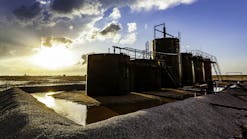The U.S. Environmental Protection Agency (www.epa.gov) announced a proposal requiring large industrial facilities that emit at least 25,000 tons of greenhouse gasses (GHGs) a year to obtain construction and operating permits covering such emissions. The permits mandate that the organizations must demonstrate the use of best available control technologies and energy efficiency measures to minimize GHG emissions when facilities are constructed or significantly modified.
The EPA believes it has the authority to impose such requirements under the Clean Air Act and says the rule is carefully tailored to apply to only the largest sources of greenhouse gases – i.e., those from sectors responsible for nearly 70 percent of U.S. GHG emissions. The large facilities affected by the rule would include power plants, refineries and factories. Small businesses, such
as farms, restaurants and many other types of small facilities would not be included in the proposed requirements, according to the EPA.
If the proposed fuel-economy rule to regulate GHGs from cars and trucks is finalized and takes effect in the spring of 2010, Clean Air Act permits would automatically be required for stationary sources emitting GHGs. This proposed rule focuses these permitting programs on the largest facilities, responsible for nearly 70 percent of U.S. stationary source greenhouse gas emissions.
With the proposed emissions thresholds, EPA estimates that 400 new sources and modifications to existing sources would be subject to review each year for GHG emissions. In total, approximately 14,000 large sources would need to obtain operating permits that include GHG emissions. Most of these sources are already subject to clean air permitting requirements because they emit other pollutants.
The proposed tailoring rule addresses a group of six greenhouse gases: carbon dioxide (CO2), methane (CH4), nitrous oxide (N2O), hydrofluorocarbons (HFCs), perfluorocarbons (PFCs), and sulfur hexafluoride (SF6).
In addition, EPA is requesting public comment on its previous interpretation of when certain pollutants, including CO2 and other GHGs, would be covered under the permitting provisions of the Clean Air Act. A different interpretation could mean that large facilities would need to obtain permits prior to the finalization of a rule regulating greenhouse gas emissions.
EPA will accept comment on these proposals for 60 days after publication in the Federal Register. To review the proposed rules and for more information, visit www.epa.gov/nsr.

